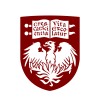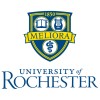
Tennessee Connections for Better Birth Outcomes
Preterm BirthWomen with a history of a prior preterm birth (PTB) have a high probability of a recurrent preterm birth. Some risk factors and health behaviors that contribute to PTB may be amenable to intervention. Home visitation is a promising method to deliver evidence based interventions. We evaluated a system of care designed to reduce preterm births and hospital length of stay in a sample of pregnant women with a history of a PTB. All participants (N = 211) received standard prenatal care. Intervention participants (N = 109) also received home visits by certified nurse-midwives guided by protocols for specific risk factors (e.g., depressive symptoms, abuse, smoking). Data was collected via multiple methods and sources including intervention fidelity assessments. Average age was 27.6 years. Racial breakdown mirrored local demographics. Most women had a partner, a high school education, and Medicaid. Enhanced prenatal care by nurse-midwife home visits may limit some risk factors and shorten intrapartum length of stay for women with a prior PTB. This study contributes to knowledge about evidence-based home visit interventions directed at risk factors associated with PTB.

Uterocervical Angle in Patients With Preterm Premature Rupture of the Membranes
Preterm LaborTo evaluate the performance of uterocervical angle (UCA) in the prediction of labor timing in patients with preterm premature rupture of the membranes

Optos Versus Indirect Ophthalmoscopy for ROP Screening Examination (Optos vs BIO Study)
Pre-TermROP is a preventable cause of blindness in premature infants. It is routinely screened for by using an indirect ophthalmoscope, a scleral depressor, and a condensing lens. This method of screening can cause significant cardiorespiratory distress to infants. A new camera (Optos California) has recently been used to image infants with different severities of ROP. The Optos California is capable of capturing up to 200 degrees of retina in a single image without contact with the eye. The non eye contact nature of the Optos California may cause less distress to infants who are due a ROP screening examination. The present study is to compare the impact of ROP screening examination between the Optos retinal camera and conventional binocular indirect ophthalmoscopy using cardiorespiratory indices (such as heart rate, oxygen saturations, blood pressure, and respiratory rate) as a measure of distress.

A Randomized Trial of Induction Methods in Premature Rupture of Membranes
Preterm Premature Rupture of Fetal MembranesInduction of Labor Affected Fetus / NewbornThis study evaluates the addition of transcervical Foley catheter balloon and vaginal prostaglandin E2 induction in premature rupture of membranes. Half of participants will be used combine transcervical Foley catheter balloon and vaginal prostaglandin E2, while the other half will be used alone vaginal prostaglandin E2.

A Novel Technique for Prediction of Preterm Birth: Fetal Breathing Patterns
Preterm BirthPreterm birth refers to a delivery that occurs before 37 weeks of gestation. Identification of those who will eventually deliver in the preterm period is very important. However, few interventions have been proven to prolong pregnancy in women at risk such as cervicovaginal fetal fibronectin (fFN) level or transvaginal cervical length measurements. In a meta-analysis comparing fetal breathing with cervicovaginal fetal fibronectin (fFN) level or transvaginal cervical length measurements, absence of fetal breathing was superior to other methods for prediction of preterm birth in 48 hours or 7 days. In this study, the investigators hypothesized that if a fetus holds its breath in case of preterm birth, then there may be specific fetal breathing patterns during preterm labor, which may be detected by ultrasonography

A Randomized Controlled Trial Investigating if Antibiotic Use in the First 48 Hours of Life Adversely...
Premature Birth of NewbornEnterocolitis1 moreThe purpose of this study is to determine whether antibiotics given immediately after birth alter the development of the developing preterm infant's microbiome, which may further alter overall clinical outcomes.

PartoSure to Predict Spontaneous Preterm Delivery in Pregnancies After Assisted Reproductive Technology...
InfertilityTo calculate sensitivity (SN), specificity (SP), positive predictive value (PPV) and negative predictive value (NPV) of PartoSure TTD test in predicting delivery within 7 or 14 days from testing and to compare it with cervical length (CL) measurement by transvaginal ultrasound (15 mm cut-off)

Chest Shielding in Premature Infants During Phototherapy
Patent Ductus Arteriosus in Premature InfantsThis is a feasibility study where Infants will be randomized to either chest shielding with aluminum foil or chest shielding without aluminum foil while undergoing phototherapy for premature infants. The primary outcome is patent ductus arteriosus.

Cook Balloon Versus Propess After 12 Hours of Rupture of Membranes
PROM (Premature Rupture Of Foetal Membrane)The objective is to demonstrate the superiority of the strategy of labor induction by Cook® cervical ripening balloon between recommended strategy by dinoprostone (propess®) on the reduction of the time between cervical ripening and delivery in case of unfavorable cervix after 12 hours of PROM in term pregnant women.

A RCT of CenteringPregnancy on Birth Outcomes
PregnancyPreterm BirthThe purpose of this study is to evaluate whether CenteringPregnancy group prenatal care can improve preterm birth rate and other birth outcomes, maternal psychosocial and behavioral outcomes, and decrease the racial difference in selected birth outcomes among African American and White women, compared to individual prenatal care.
